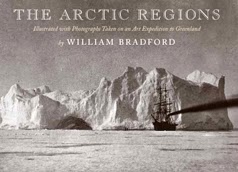Twenty-five Years of Expeditions into Naboland
Roger Billcliffe Fine Art Ltd, Scotland: 2000
Illustrated in colour, 40 pages
0952342157
This catalogue predates the public awareness of Behrens’ work following its appearance on the cover of Peter Davidson’s influential book The Idea of North. A good general introduction to Behrens’ early work, it reveals ‘the lost (or parallel) continent of Naboland’ [Billcliffe], an imagined landscape reminiscent of the arctic. Behrens has a background in archaeology; his works frequently combine glacial landscapes with displays of objects rescued from the ice, laid out like museum exhibits, both divorced from their surroundings and, through their shape and decrepitude indelibly linked to them. The key object in the series, a rusted toy submarine, is a real artefact dredged from a German estuary by the artist. Behrens is based in Scotland and the wild landscapes of the Cairngorms clearly influence his work. More recently, the Himalayas (‘Nabo-La’) and the Alps have been added to the toy submarine’s itinerary. This book contains contributions by art critics and creative writers such as John Glenday, Murdo MacDonald and Sally Evans, as well as Behrens himself.
(£0)






